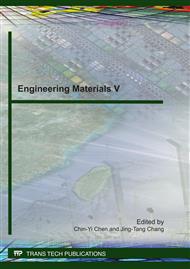p.1
p.8
p.13
p.22
p.27
p.34
p.40
p.48
Quench Brittleness of 12%Cr Martensitic Heat-Resistant Steel
Abstract:
The mechanism of brittleness due to slow cooling during quenching was experimentally investigated in 12% Cr martensitic heat resistant steel. The mechanical property tests and microstructural characterization by SEM、TEM and XRD were conducted. The results showed the impact toughness would decrease with the slowing of cooling rate during quenching, and the low cooling rate within the temperature range from 820 to 660 °C played a significant effect on the impact toughness . Different from the mechanism of temper brittleness, the main causes of embrittlement due to the slow cooling upon quenching were both the continuous precipitation of M23C6 along prior austenite grain boundaries during the process of slow cooling and that of M2C along prior residual austenite film during tempering, and this kind of quench brittleness was nonreversal.
Info:
Periodical:
Pages:
8-12
Citation:
Online since:
April 2011
Authors:
Price:
Сopyright:
© 2011 Trans Tech Publications Ltd. All Rights Reserved
Share:
Citation:


